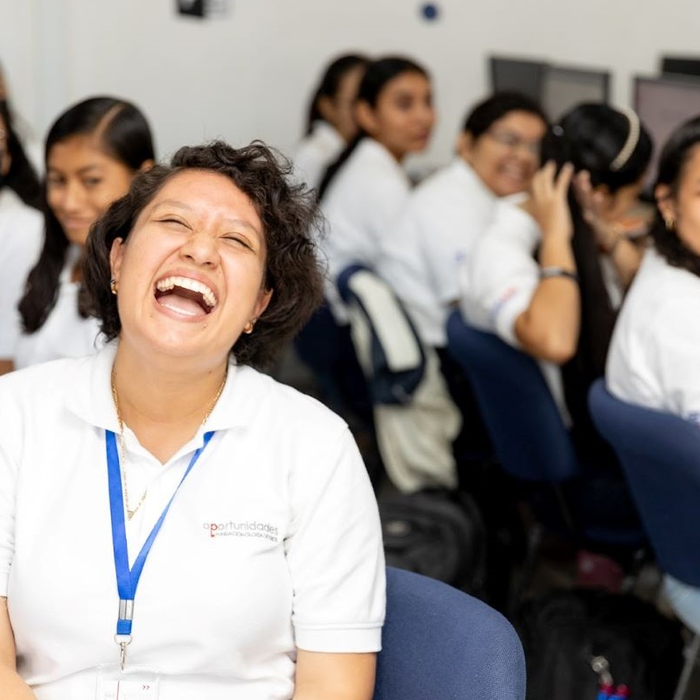Starting with the Local System: Preparing Future Professionals to Address Global Emergencies
Higher Education Scholarships in Action Blog Series
 Photo Credit: One Health Workforce
Photo Credit: One Health Workforce
In connection with the launch of the USAID Higher Education Scholarships Toolkit, and to help demonstrate the value and importance of USAID's higher education scholarships programs, the USAID Leading Through Learning Global Platform (LTLGP) interviewed USAID staff from the Egypt and Indonesia Missions and the Bureau for Global Health (GH). These interviews were edited into a webinar presentation to launch the Toolkit. Watch the webinar below:
This blog recaps insights during the webinar from the conversation with Marilyn Crane, Senior International Higher Education Advisor in USAID’s Bureau for Global Health. She spoke about lessons learned from scholarship programming through the OneHealth Workforce project (2014-2020) and the One Health Workforce – Next Generation project (2019-present) and how these lessons align with the principles of USAID’s recently released Local Capacity Strengthening Policy.
OneHealth Workforce
As much as 75 percent of human diseases originate in animals, including diseases like HIV, Ebola, and most recently COVID-19. This is why USAID invests in One Health—a collaborative, multisectoral, and transdisciplinary approach with the goal of achieving optimal health outcomes recognizing the interconnection between people, animals, and their shared environments.
USAID’s One Health Workforce (OHW) and OHW-Next Generation (OHW-NG) programs work to prevent, detect, and respond to threats of infectious diseases globally. As the OHW program began to assess the capabilities in target areas like Central and East Africa and Southeast Asia, staff noticed that while, in general, there was a relatively well-developed cadre of human public health experts, that was not the case on the wildlife side. “If we wanted to have a stronger workforce that’s better prepared to address emerging pandemic threats, infectious disease threats, and antimicrobial resistance, we needed to bolster the wildlife workforce,” explained Crane before she outlined the thought process behind OHW’s embedded scholarship support for master’s degrees in wildlife surveillance and management.
With this focus on assessing capabilities in mind, there are three main takeaways for scholarship planning and implementation.
1. Start with the local system (Principle 1) and align capacity strengthening with local priorities (Principle 2)
In setting up the embedded scholarships focused on wildlife, OHW consulted locally with relevant ministry officials, university faculty and leadership, and private sector employers. They also conducted stakeholder workshops to assess workforce capacity and needs. These workshops revealed a critical gap that needed to be addressed: matching education with employers’ needs.
The emphasis on the employability of graduates is critical. “There may be a need for certain kinds of workers, but if there are no positions or jobs, then you can train them up but not actually have an impact,” said Crane. “It was really important as well to understand what the labor market’s ability was to employ the graduates from this program.”
2. Strengthen diverse capacities through diverse approaches (Principle 2) and appreciate and build on existing capacities (Principle 5)
Technical skills alone are not adequate to fully address the need. In discussing the embedded wildlife scholarship program under OHW, Crane noted that “we also intended this program not only to fill the technical gap with the wildlife professionals, but to ensure these professionals have the expertise in wildlife management surveillance and the soft skills [such as] leadership, communication, and management.”
Creating a scholarship program takes time, especially if the scholarships will support students with an entirely new degree. “In this case, we were also designing a new Master’s program. So that lengthened the amount of time for startup because of the need to develop the curriculum and the need for the university approval process,” explained Crane.
3. Be mindful of and mitigate the unintended consequences of our support for local capacity strengthening (Principle 6)
There are risks associated with scholarship programs. A significant risk can be that after graduation, the student does not go on to work in the country or field that was supposed to benefit from their newly acquired expertise. “When you think and you hear about scholarship programs, you often hear people express concern about brain drain,” said Crane. “With our programming with embedded scholarships, one of the aspects we have focused on is providing the training in-country or in a third country and, when possible, linking graduation with employment opportunities in-country. This helps ensure a greater likelihood that scholarship recipients will stay in-country and contribute to the workforces of their country.”
OHW worked with regional university networks in Central and Eastern Africa and Southeast Asia and funded more than 60 scholarships (partial and full) across the project countries. For example, the Southeast Asia One Health University Network provided 30 scholarships for students from Indonesia, Malaysia, Vietnam, Bangladesh, Cambodia, and Myanmar to pursue One-Health-related Master’s programs. The follow-on activity, OHW-Next Generation has also supported 105 scholarships across nine countries since 2019.
With the embedded scholarships, it is hoped that wildlife surveillance and management professionals will be in place to prevent, detect, and respond to pandemic, epidemic, and other public health emergencies as early as possible, said Crane.
To learn more about designing embedded scholarship programming, visit the good practices brief on this topic, Good Practices for Scholarships Embedded in Larger USAID Activities.
Learn More:
Related Blog Posts

Embracing Effective Learner-Centered Approaches in Higher Education

One Year in Higher Education, Five Activities to Keep Learning From
